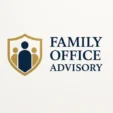Next-Gen Education & Leadership Programs #
Next-generation education equips future family members with the financial literacy, leadership skills, and governance awareness required to sustain the family’s wealth, purpose, and legacy. Family offices play a central role in designing structured programs that prepare heirs for responsibilities as owners, board members, trustees, philanthropists, or leaders in the family enterprise.
Context & Importance #
Many UHNW families face the challenge of transitioning wealth and decision-making to younger generations who may lack experience in financial management, governance, or leadership. Poor preparation can lead to conflict, misaligned expectations, and erosion of long-term wealth. Structured education programs improve confidence, stewardship, and engagement while strengthening family cohesion.
Core Components of Next-Gen Programs #
- Financial literacy: Budgeting, saving, investing, compound interest, and capital markets basics.
- Governance training: Understanding family charters, decision rights, board roles, and fiduciary duties.
- Leadership development: Communication, negotiation, conflict resolution, strategic thinking.
- Wealth stewardship: History of the family, mission, values, and long-term legacy goals.
- Philanthropy education: Grantmaking, impact evaluation, foundation board participation.
- Business exposure: Involvement in family business, internships, mentorship programs.
- Personal development: Mental resilience, purpose exploration, and career planning.
Typical Program Formats #
- Workshops & seminars: Periodic educational sessions run by advisors or external experts.
- Family councils: Structured meetings for multi-generational engagement and governance practice.
- Mentoring & coaching: Pairing younger members with senior family leaders or external mentors.
- Internships & rotations: Experience in the family business or family office.
- Simulation exercises: Mock investment committees, crisis scenarios, or strategic decision-making drills.
- Philanthropy involvement: Participation in foundation boards or grant committees.
Implementation & Best Practices #
- Start early: Introduce age-appropriate financial concepts during adolescence.
- Tailor programs: Match learning paths to individual interests, roles, and personality types.
- Combine theory and practice: Use real family structures and reports for applied learning.
- Document expectations: Establish guidelines for readiness, roles, and qualification criteria.
- Encourage cross-generational dialogue: Build trust and shared purpose between ages.
- Promote accountability: Use committees, mentorships, and learning milestones.
- Use external experts: Bring in educators, business coaches, governance advisors, and psychologists.
Common Challenges #
- Lack of interest among younger family members.
- Confusion between entitlement and stewardship.
- Intergenerational communication barriers.
- Overly theoretical programs without real-world application.
- Role ambiguity or unclear succession expectations.




